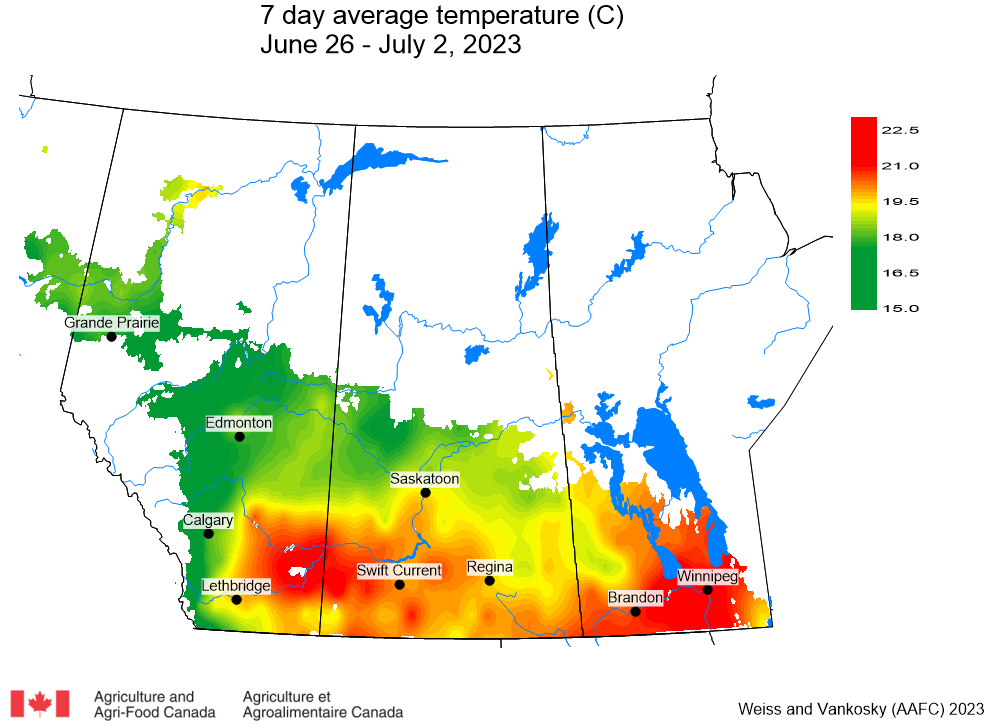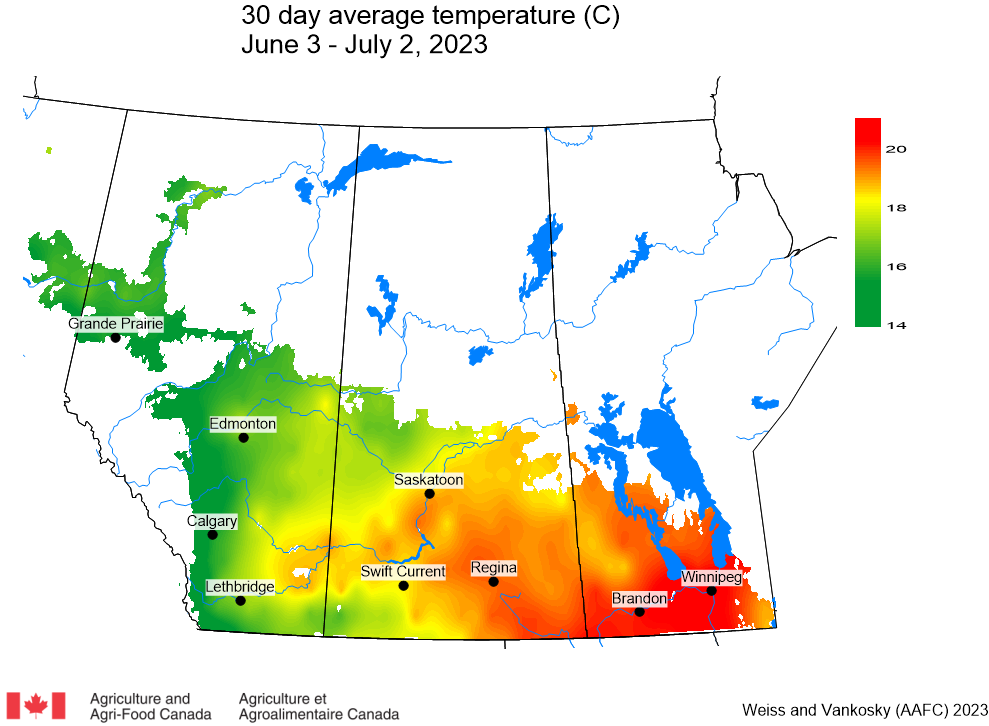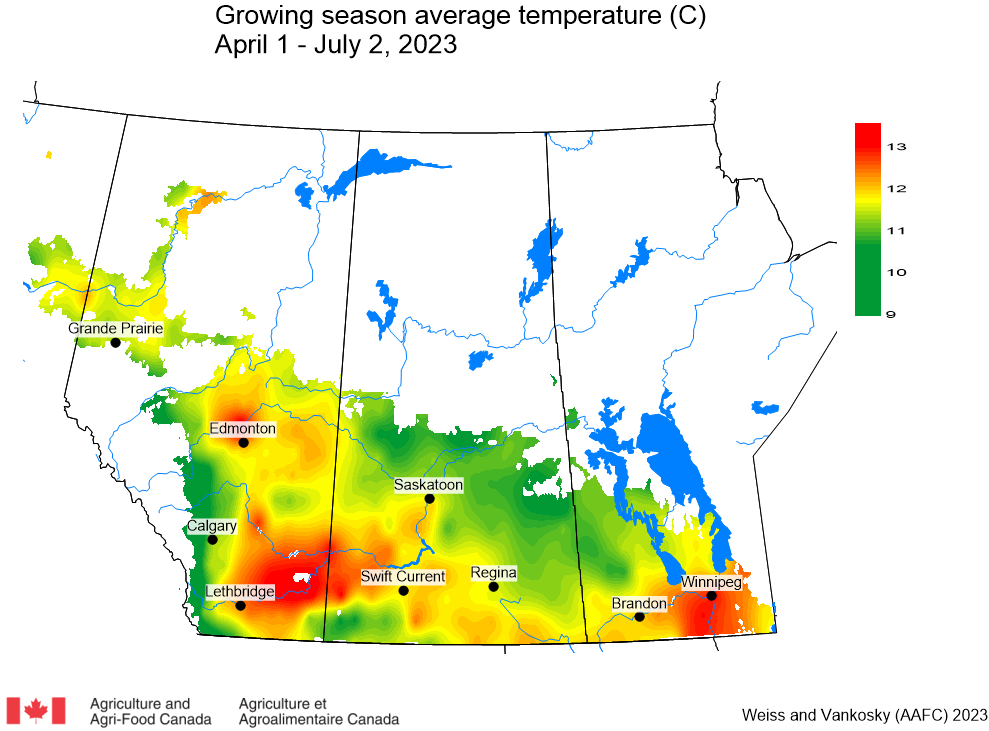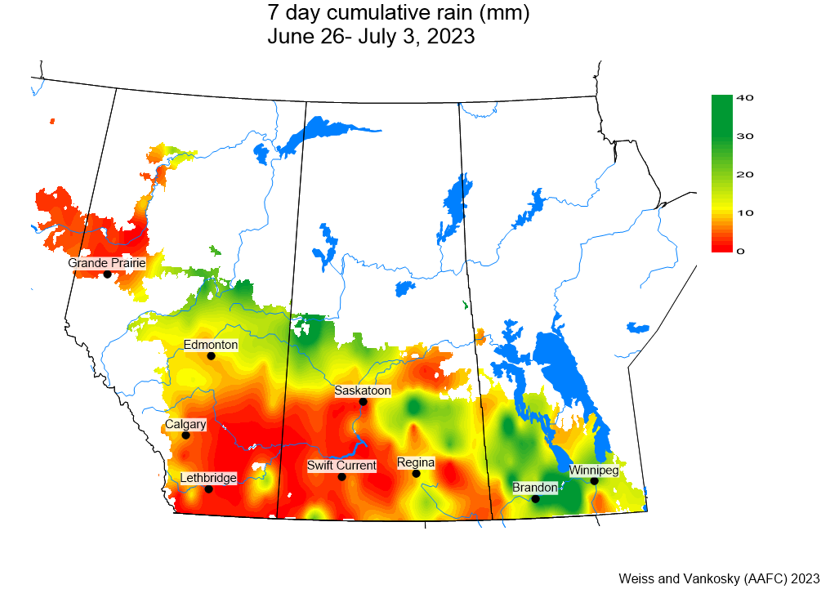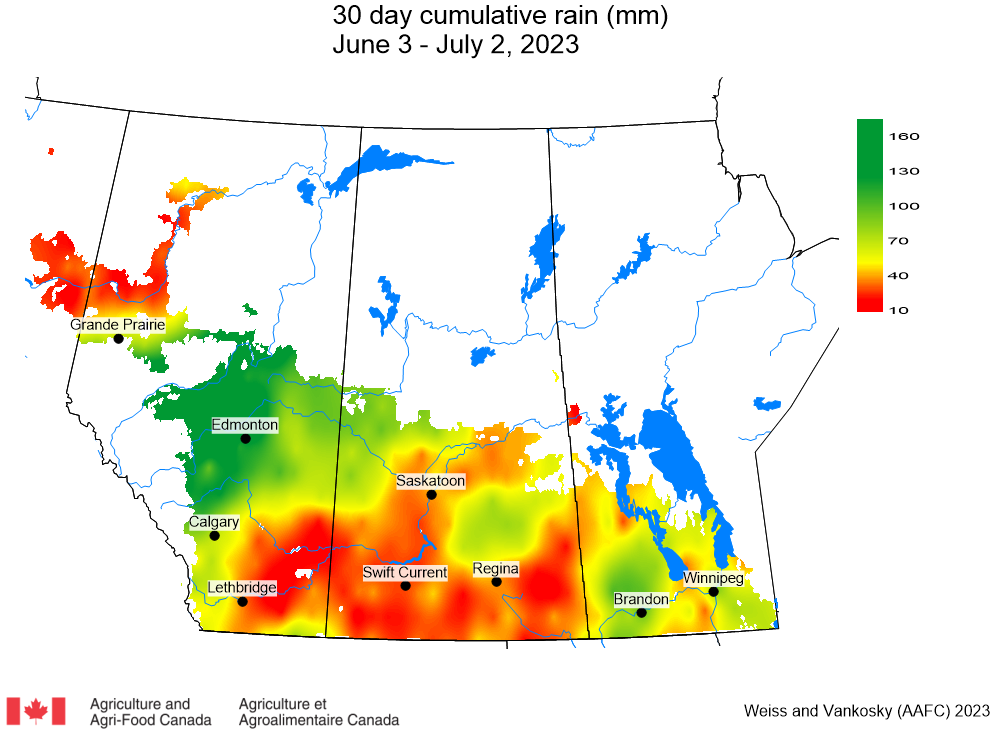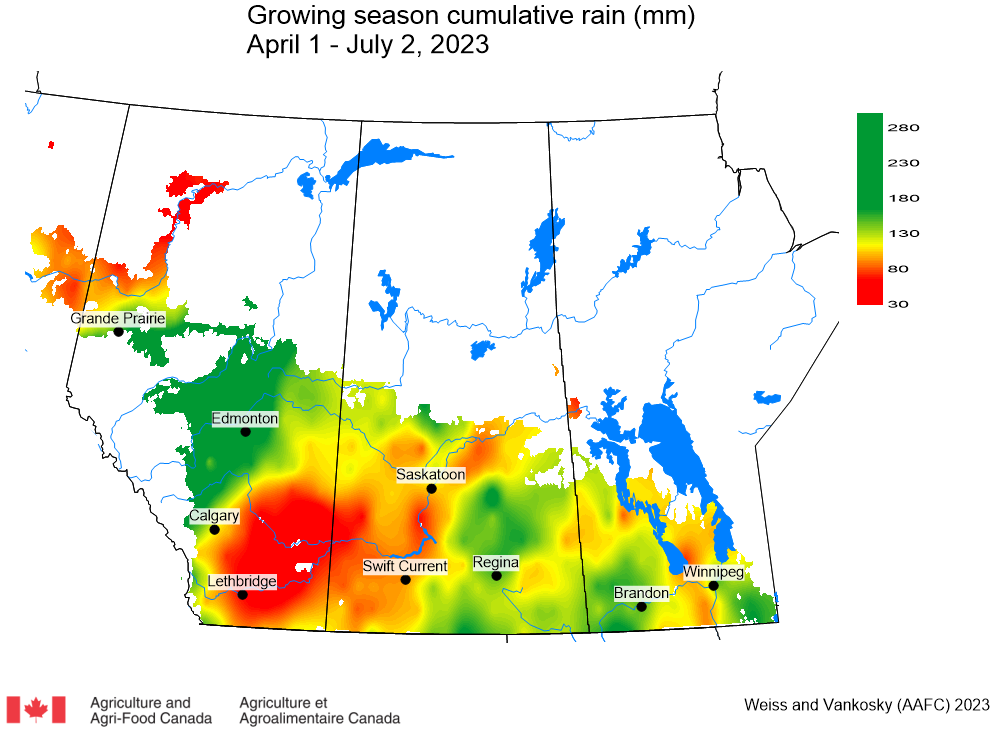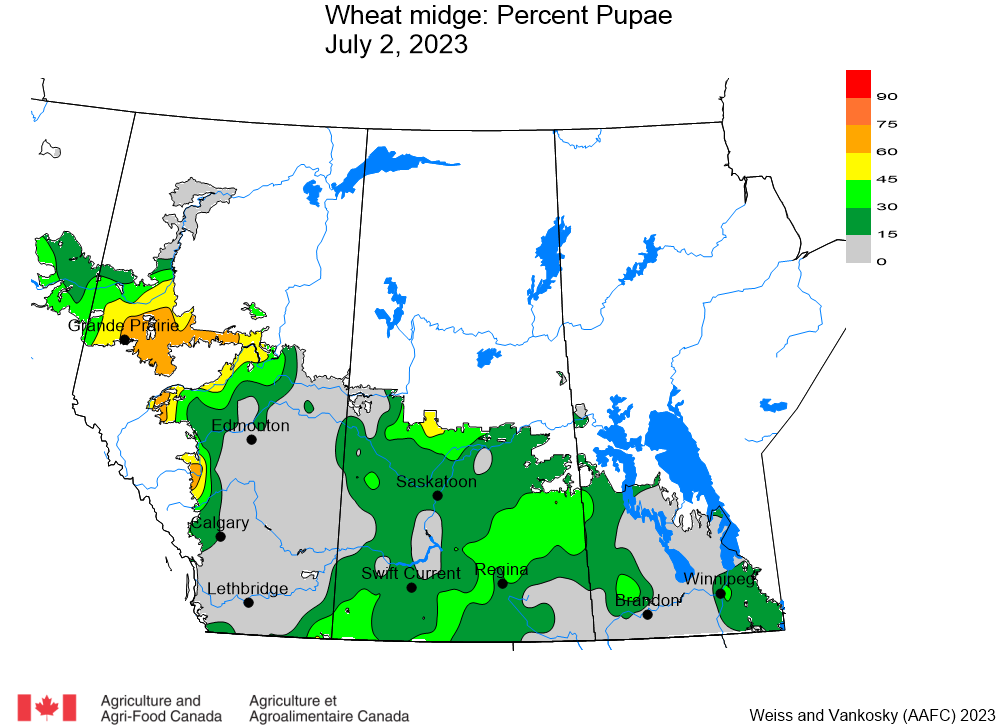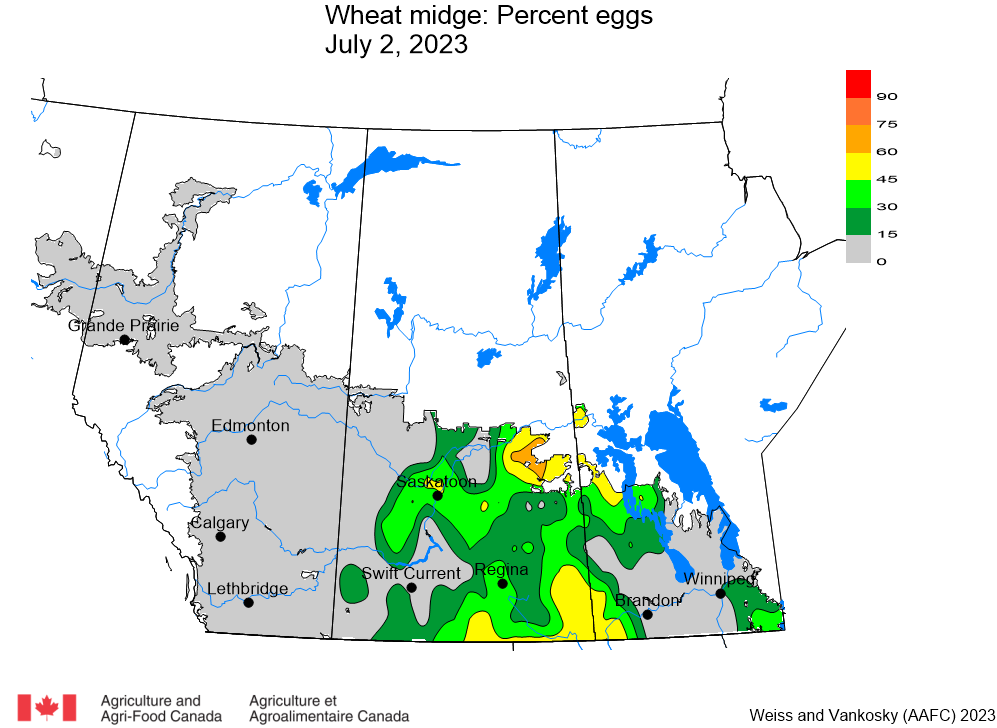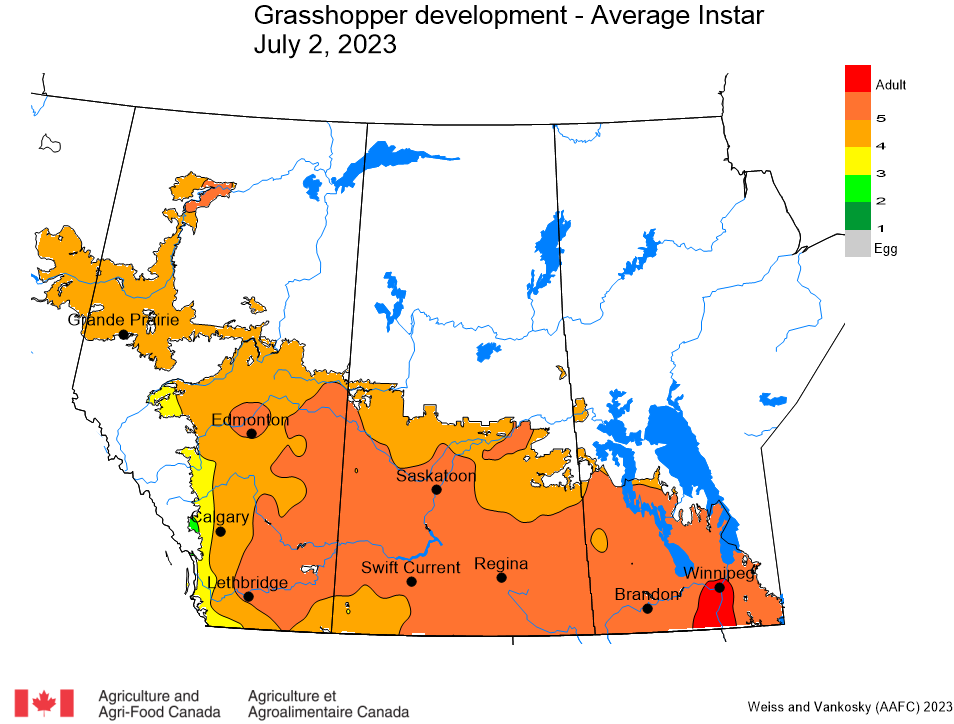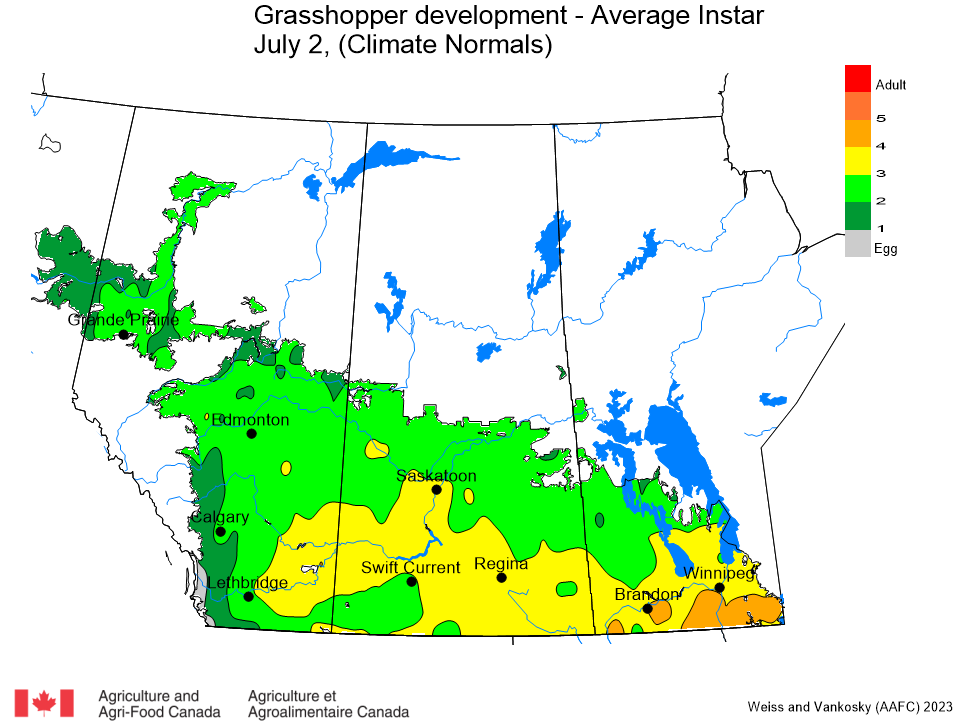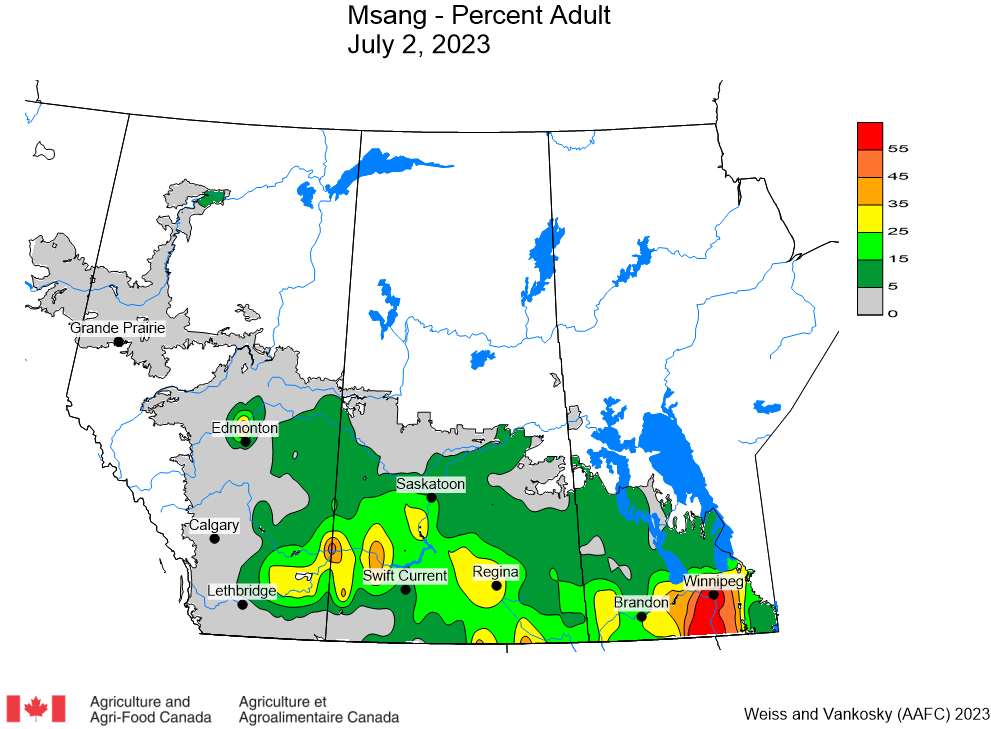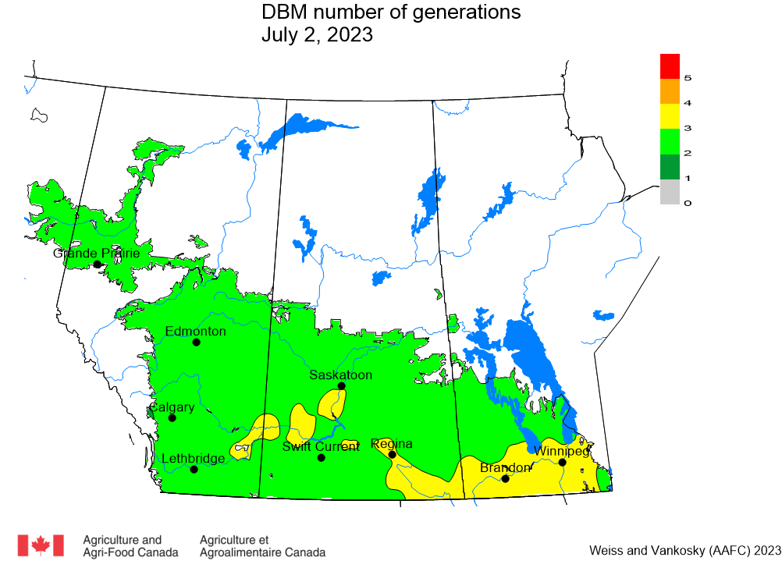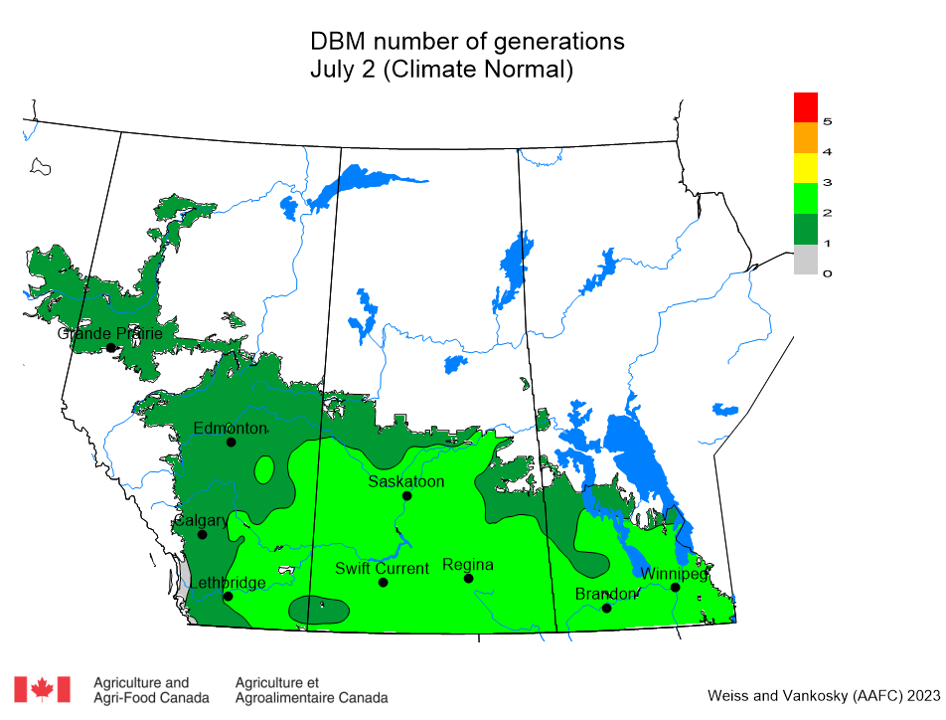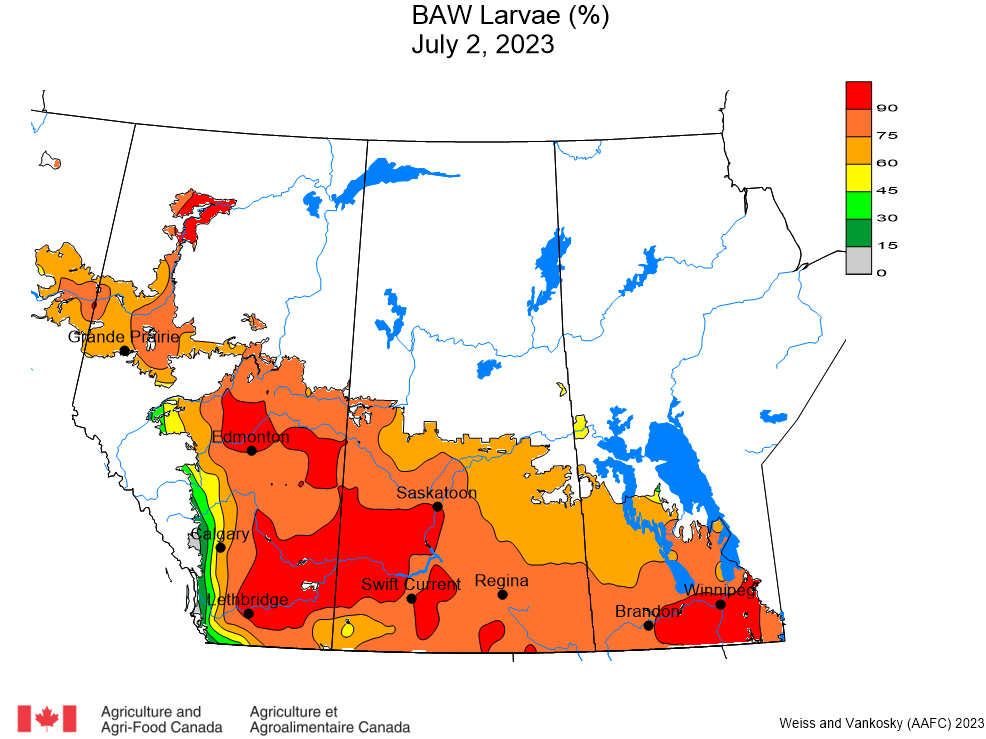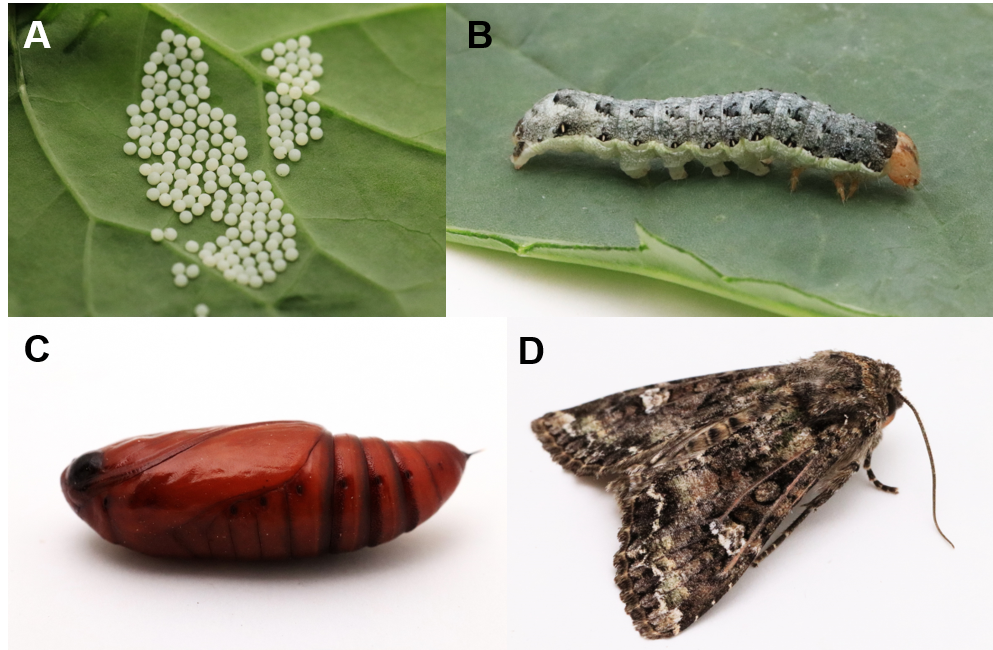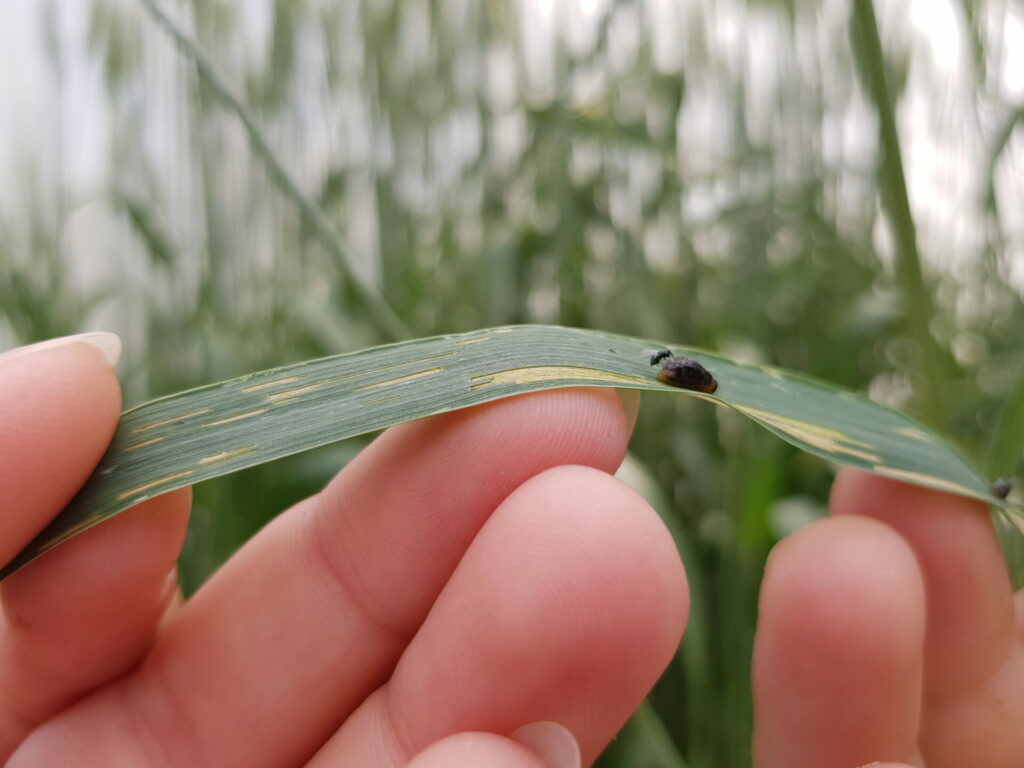Insect scouting season is in full swing after the long weekend! The Prairie Pest Monitoring Network is busy with the annual cabbage seedpod weevil survey right now. Grasshoppers, wheat midge, and moths remain on our radar though, with development of many insect pests ahead of schedule this year thanks to warmer than average weather.
The first adult wheat midge of 2023 were reported in Saskatchewan in late June. Although not all areas had enough rainfall at the right time for wheat midge development, but scouting for wheat midge will be important in wetter areas. Models suggest that pupal development is well underway and that adults are flying and laying eggs in some areas. This could be an interesting year for wheat midge.
Adult grasshoppers are becoming more common across the prairies now. Diamondback moth could be entering into the third non-migrant generation in some areas (if present), and the peak flight of adult bertha armyworm should now be finished. Where present, bertha armyworm populations should mostly consist of larvae. Use information from this Weekly Update and updates from our provincial partners to learn more about risk in your area and to plan scouting activities.
This is a busy time for our field research programs across western Canada. In particular, the annual cabbage seedpod weevil survey is well underway. For farmers in Alberta, watch the map for near-real-time monitoring results from the cabbage seedpod weevil survey! It looks like some fields in southern Alberta have high numbers of cabbage seedpod weevils. The PPMN monitoring protocol for cabbage seedpod weevil is available on the Monitoring Protocol page.
This week, the Insect of the Week featured Tetrastichus julis, a parasitoid that attacks cereal leaf beetle. Next week, look for our post about natural enemies of wheat midge.
Remember, insect Monitoring Protocols containing information about in-field scouting as well as information about insect pest biology and identification.
To receive Weekly Updates automatically, please subscribe to the website!
Questions or problems accessing the contents of this Weekly Update? Please contact Dr. Meghan Vankosky (meghan.vankosky@agr.gc.ca) to get connected to our information. Past Weekly Updates, full of information and helpful links, can be accessed on our Weekly Update page.

